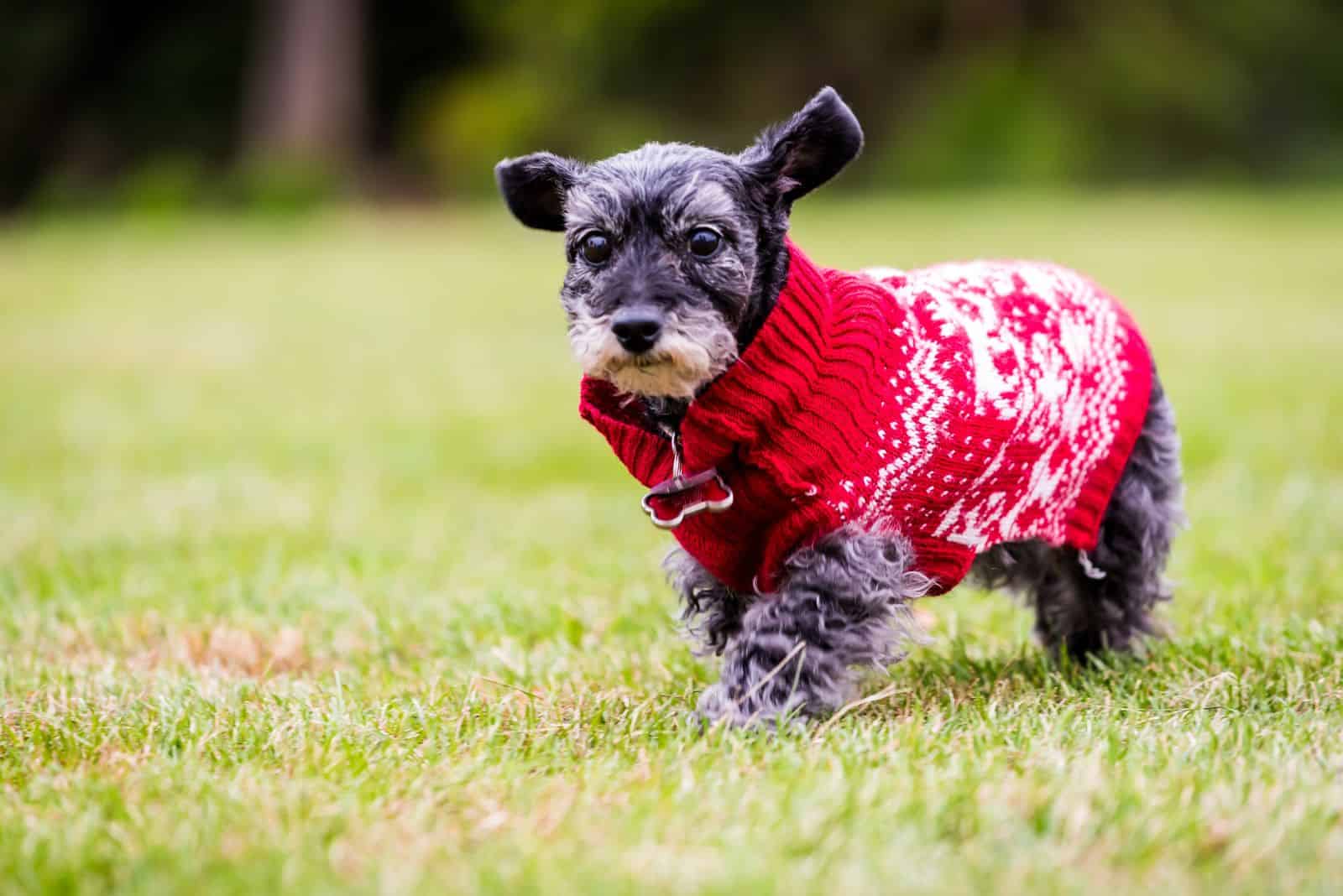If you purebred Dachshunds or Schnauzers lack that designer dog vibe you need in your life, I have got a Schnoxie to offer. Small dogs are ideal candidates for incredible crossbreed combinations, so having a custom designer breed was never easier.
The availability of different sizes of the Schnauzer Dachshund mix makes it an even more appealing proposition for those of you who love a lap-on approach without sacrificing key features from both dog breeds.
Your Schnoxie will gladly rise to the occasion if those pesky badgers decide to rummage through your trash cans or ravage your gardening display, so lay back and enjoy this breakdown of the Dachshund Schnauzer mix.
Schnauzer Dachshund Mix Feature Checklist
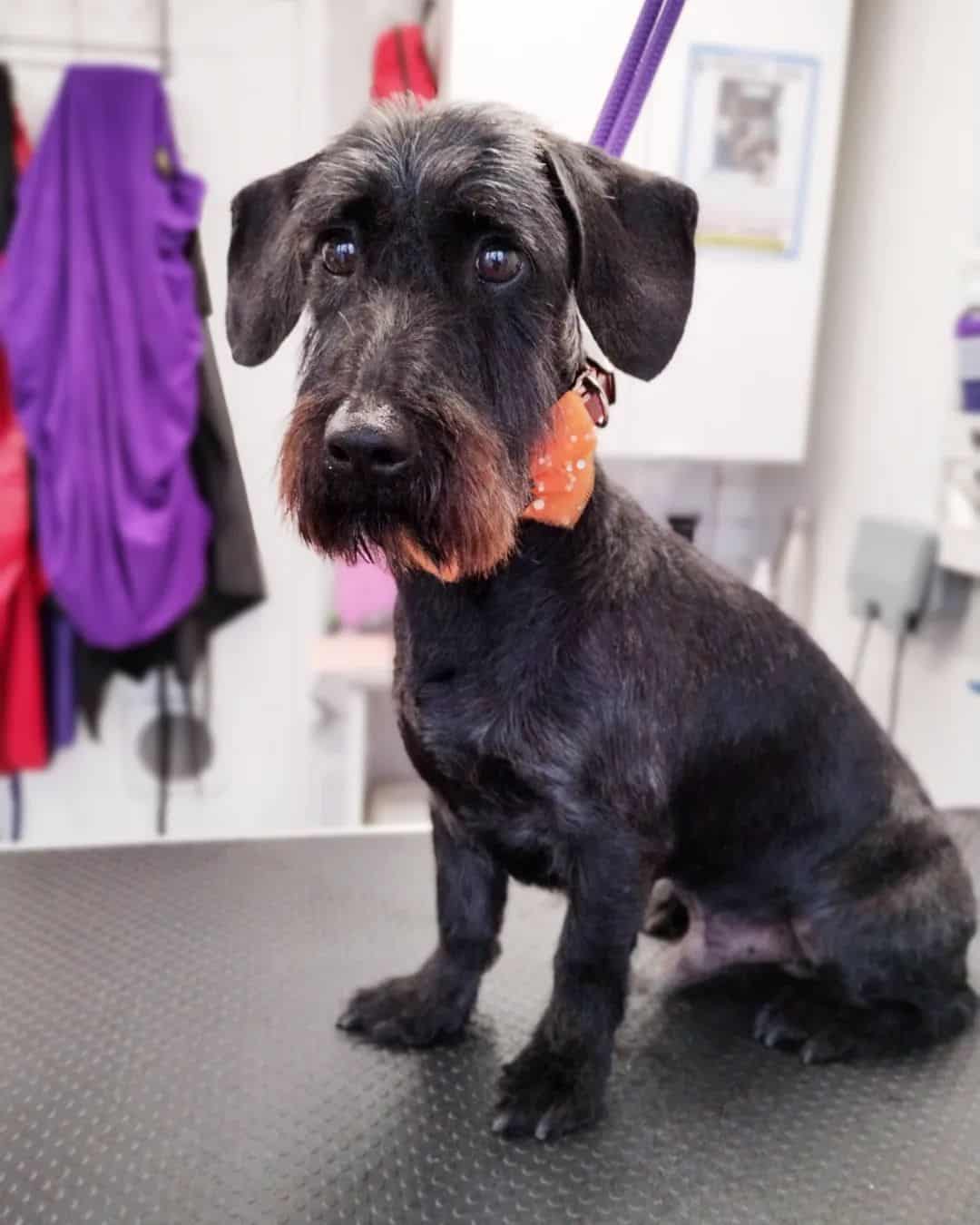
Why were Schnoxies created? They obviously exist to be the unsurpassable companion dog you always deserved. Once upon a time, their parent breeds had jobs of utmost importance — helping humans catch rodents and hunt small game. Now, they help humans cope with life’s hardships.
Designer breeds are how breeders adapted to modern life, where comfort and companionship trump catching rats and chasing foxes. The Dachshund Schnauzer mix even has an appropriately captivating name — the Schnoxie.
At a quick glance, the Schnauzer Dachshund mix is compact, strong for its size, and an active and vocal crossbreed. Despite being a mix, the American Canine Hybrid Club, Designer Breed Registry, and a few more organizations allow for its registration and participation in competitions.
Most commonly, the miniature Schnauzer and Dachshund are bred to produce the Schnoxie, but a miniature Schnoxie exists too. Just replace the Dachshund with the miniature version, and you get the mini.
This mix is popular with people who love the Schnauzer’s wiry coat but would prefer something that requires less grooming. They are excellent family dogs, will enjoy the company of your guests, and say what is on their minds every now and then.
If you lead a busy life and your Schnoxie gets bored waiting for you at home all by itself, feathers and couch-filling around the house are part of the “waiting game”. I mean, they are designer dogs, so why not interior design?
A Body Designed In Germany
Seeing a Schnoxie for the first time ought to put a smile on your face. This small or medium-sized dog will grow from ten to fourteen inches tall and weigh somewhere in the region of fifteen to thirty pounds.
While that sounds like a lot of belly for such small a dog, the breed is quite stocky and muscular. The skull is narrow but with a long muzzle that narrows towards the nose. It is perfect for sticking their nose into your business.
Noses come in three colors: Isabella, brown, and black. This is paired with the coat color, which we will have a dedicated section for.
The eyes are not pronounced, but their brow bone can be slightly overarching. The stop is moderate, making the Schnoxie have an expression that always says eager to please. In terms of eye colors, you can get a blue, brown, or hazel-eyed Dachshund Schnauzer mix.
A trademark of the Dachshund breed, the ears can be semi-hanging or completely floppy. This will depend on which parent breed won the genetics game, but the half-floppers are much more entertaining, in my opinion.
The chest is deep and substantial, thanks to both parent breeds working in tight tunnels underground. The Schnoxie has great lung capacity, so scuba-diving will not be a problem.
The front legs are very muscular, so make sure you watch Shawshank redemption or other prison escape movies with your Schnoxie’s eyes blindfolded or suffer the consequences. Hind legs are less muscular but equally strong, with dense, weighty bones.
Depending on which parent breed chromosome commanded the tail appearance, your Schnoxie might have a tail that narrows to a point or one that is of equal diameter throughout its length.
Coat Types
Length and quality of coat play a major role when deciding whether a breed is right for you and your family. While the word “hypoallergenic” is thrown without regard for facts, there is good and slightly less good news when it comes to Schnauzer Dachshund mix coats.
The good news is that you can get a Schnoxie with an allergy-friendly coat, but the bad news is that nobody can know exactly what kind of coat the puppies will have. That is the downside of crossbreeds.
You will have a fifty percent chance that your Dachshund Schnauzer mix is born with a Schnauzer allergy-friendly coat. The odds are at least decent. Other than that, the medium coat length is ideal for those who enjoy one or two weekly grooming sessions.
Grooming And Coat Colors
Shedding potential is average, so you will notice the hair around the house, but with proper grooming, it can be kept at a minimum. Coat quality resembles that of a Schnauzer more than the Dachshund, which means a dense double coat.
The hair is usually more straight than wiry, but a noticeable bend is visible. After intense playing sessions in the mud, you might find yourself reaching for the detangler more than once a week. Keep in mind that the dominant parent defines these characteristics, so your mileage may vary.
For color options, there are many possibilities, but because the crossbreed has been around since the 1990s, seven options are the most common — black, gray, brindle, fawn, Isabella, silver, and red. Much rarer, but still possible, is the pied color pattern.
Let us not forget that your Schnoxie could have a wise-man look if the Schnauzer parent dominates the coat. They are known for their bushy beard and eyebrows and prefer not to be judged for it!
But What Is Under The Hood?
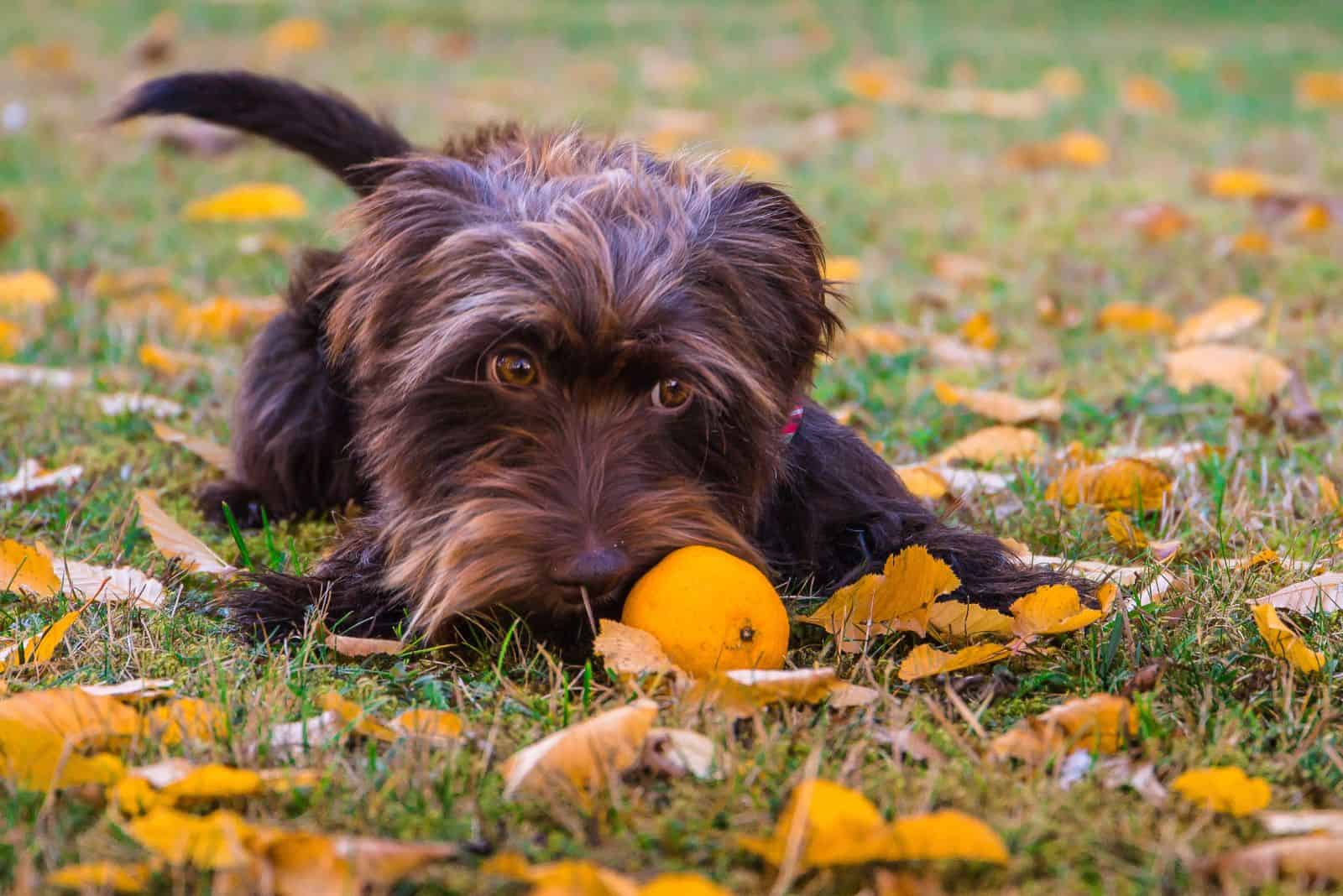
This Dachs Doxie mix is very similar to a Mini Cooper — it is a great option for tight spaces in the city but surprisingly able in rough country terrain as well. However, all this would be impossible without a great engine and complex circuitry.
Energy Levels And Trainability
Designer dogs are bred for indoor living because of their size but, more importantly, their temperament. For a Schnoxie, adapting to any kind of living is no problem. I guess that stubbornness to please is a trait that prevents them from failing.
Do not disregard their innate need for activity, as these dogs carry high-energy level genes from the parent breeds. Playtime will require moderate to high intensity, with a moderate amount of mental stimulation.
Given the proportions of their body and their active dog nature, they will be rid of that energy in a relatively short period of time. No need for five-hour sessions of sprinting up and down, only for your Schnoxie to be hyperactive in half an hour.
For the times when you have to be away from home for prolonged periods of time, read our article on twenty-two ways of keeping your pup entertained. These small dogs retain a lot of their puppy behavior in adulthood, too, so give it a try.
Trainability comes completely naturally to the Schnoxie, and you will enjoy teaching it many tricks, but the Schnoxie’s stubbornness can be daunting for first-time dog owners. Consider hiring a professional dog trainer to ingrain basic obedience.
Socialization
The Schnauzer Dachshund mix is a decent watchdog, but I would not say they are good guard dogs. Still, any imminent danger will be announced through the barking device in their throat.
Whether you have small children or often host guests, this mix will blissfully ignore them when it wants but be open to playing with them at any time, too. Other dogs will not be a problem, but they do like being an “only child” most of the time.
Since they are among the smaller breeds, many other pets of similar size or larger will be able to handle their prey drive. However, smaller pets, like hamsters, guinea pigs, etc., might have a hard time being chased around the house.
It is recommended you introduce your Schnoxie puppy to the other small animals you are keeping as pets. You can never be too cautious.
Schnauzer Dachshund Mix Health Problems And Lifespan
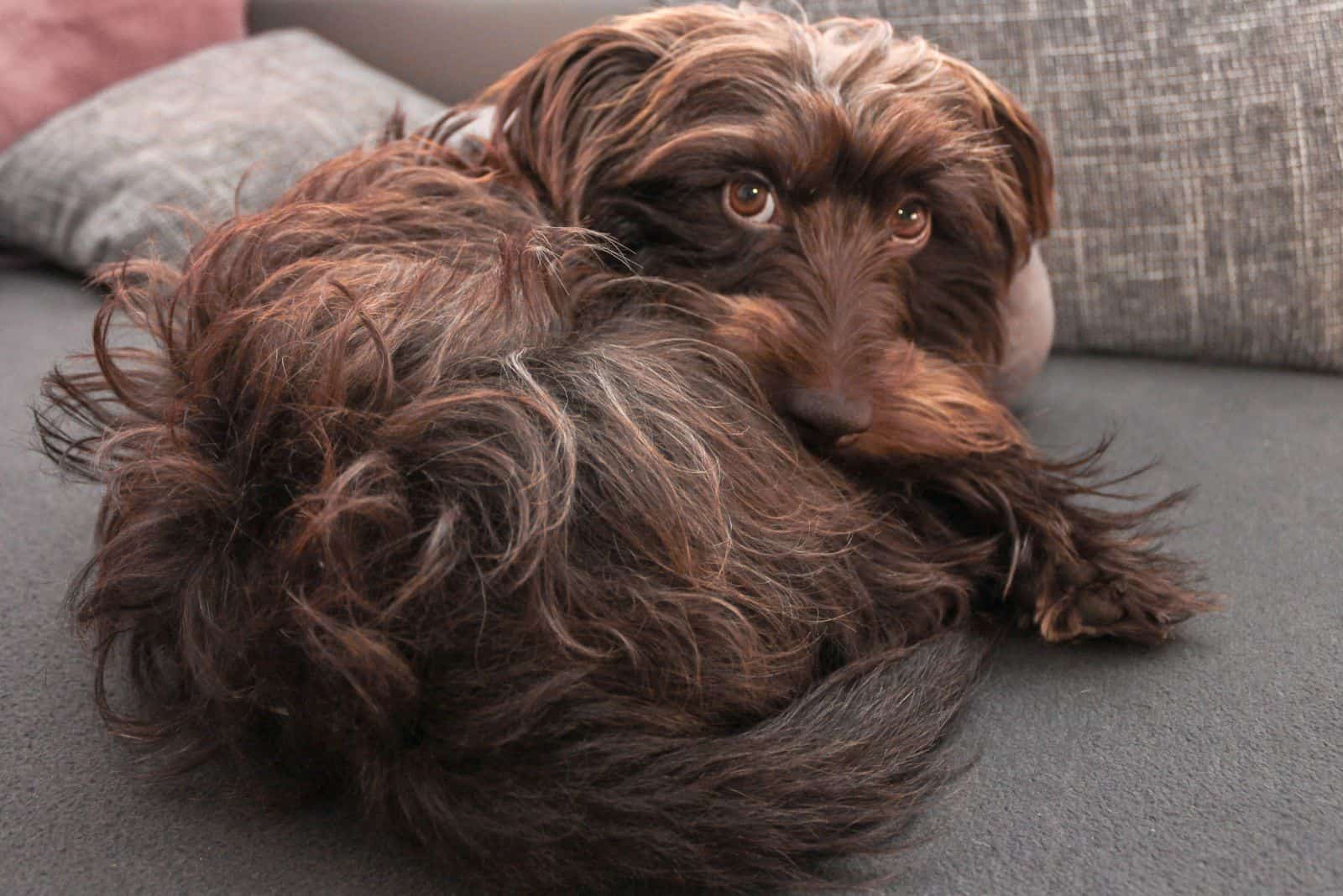
These appearance-inspired crossbreeds are often prone to some genetic conditions inherited from the parents. This Doxie mix is pretty healthy, but knowing what could happen may help you spot certain symptoms as soon as they appear.
Both the Dachshund and Schnauzer are susceptible to these conditions, so the choice of breeder plays a key role in getting a healthy Schnauzer Doxie mix. Make sure that parent breeds’ health certificates are available before you dish out the money.
Most of these congenital health problems are manageable and occur infrequently if your Schnoxie’s parents pass physical examinations and health screens that reveal a potential for genetic diseases.
No small breed health problem list would be complete without obesity. Though not genetic, it is often overlooked by dog owners and is part of a larger lifestyle problem.
Intervertebral Disc Disease (IVDD)
A compact body with a considerable amount of muscle means that the joints and spine, including intervertebral discs, can be injured. This condition happens when the disc that functions as a cushion for the vertebrae becomes displaced in the spine.
If the displacement is not corrected in due time, the weight of the dog’s body, especially during physical activity, will cause the disc to rupture. A ruptured intervertebral disc will cause pain to your Schnoxie and probably lead to loss of sensation.
The loss of sensation and pain happens when the ruptured disc no longer protects the spinal nerve that is located between those vertebrae, and other than the pain, your dog might injure itself without feeling it. Complications may arise from the injury if it is not treated.
Symptoms of IVDD include limited mobility, pain during physical activity, loss of sensation in the areas surrounding the nerve, and inability to control bladder and bowel movements.
Depending on how severe the IVDD is, pain medication or surgery are the two possible treatments.
Progressive Retinal Atrophy
Small dogs like the Schnauzer Dachshund mix are prone to eye problems, with PRA among the most common ones. The part of the dog’s eye that sends visual information to the brain. The degeneration of these cells causes loss of sight.
Being progressive in nature, the condition worsens over time, leading to blindness in the end stage. With Schnoxies, PRA is not a single condition but a combination of several eye-related problems that cumulatively lead to the loss of eyesight.
The onset of the version characterized as congenital can happen in dogs at three to four months of age, with symptoms presenting themselves after four years of age. Trauma to the eye, hormonal imbalances, and other causes can be behind PRA, too.
Common symptoms of progressive retinal atrophy include dilated pupils, loss of night vision, degradation of central vision, loss of depth perception, etc. Reversing the condition is impossible, but treatment includes lifestyle and diet changes to try and slow down the disease progression.
Pancreatitis
Put simply, pancreatitis is the inflammation of the pancreas. This organ is responsible for producing enzymes that regulate nutrient breakdown and digestion in general.
Pancreatitis can be caused by an underlying health problem, such as obesity, hypothyroidism, too much fat in the dog’s diet, diabetes, or simply congenital. The two main types of pancreatitis are acute and chronic.
Acute pancreatitis comes without any symptoms or warning. Symptom onset is fast, and if the inflammation is not curbed, it can have a potentially fatal outcome for your Schnoxie. Chronic pancreatitis gathers pace over time without showing symptoms.
Some “third-party” symptoms that occur previous to pancreatitis are a swollen stomach with or without pain, vomiting, diarrhea, lethargy, and a hunched back. Treatment for this condition is usually a strict vet-approved diet, supplements, NSAIDs, etc.
Obesity
The bane of every small dog’s existence is overeating. There are health conditions that affect enzyme and hormone production, which leads to obesity, but overeating is the prime reason for obesity in dogs.
The dual role of obesity as both symptom and cause means that it should not be taken lightly. Feeding a balanced diet accompanied by regular exercise is crucial for maintaining good health.
Obesity puts your dog at an increased risk of developing joint problems, kidney or bladder stones, diabetes mellitus, heart problems, cancer, etc. This mixed breed is relatively muscular for a small dog, so excess food will turn to fat in no time.
Kidney Stones
Tiny crystal-like formations of calcium and other elements that remain in the kidneys or pass into the bladder and urethra are called kidney stones. These small objects can cause major damage to a dog’s body, which is why you should take your Schnoxie to have occasional tests.
Why occasional? Because symptoms of kidney stones are often non-existent, making the undetectable until tests for some other conditions are performed that indicate their presence in the kidneys.
Persistent urinary tract infections (UTIs), elevated calcium levels in the blood, and dietal nutrient surpluses can all lead to kidney stones forming. The problem arises when the sharp ends of the crystals scratch the surface of tissues within the kidney or organs they can pass through.
If kidney stones do not cause damage, then they can be considered inactive, while an active one causes infection due to internal tissue damage. Symptoms that indicate kidney stones are UTIs, pain while urinating, low urine volume, and blood in the urine.
Treating kidney stones is not difficult with vet-prescribed medication and diet adaptation, but surgery might be necessary for serious cases. Here are our ten best non-prescription dog foods for urinary health.
Schnoxie Lifespan
Reading about all the different health problems this mix is prone to can paint a false portrait of a dog that is shortlived. You will be glad to hear that genetics has given the Schnoxie a lifespan of between twelve and sixteen years.
This is partly due to the Doxie parent having a slightly longer life expectancy, but the Schnauzer’s lifespan is nothing to be ashamed about. Here is to the many happy birthdays your dog and your family will celebrate!
How Much Does A Schnoxie Cost?
Most prices online are purely speculative, and giving a somewhat precise amount is hard to do. Some say that prices start at $500 and can go well over $1000.
This price range is somewhat wide, as it is with many designer breeds. Puppy mills and backyard breeders love using this designation of “designer dog” to sell high volumes of puppies for low prices. That is an immediate red flag.
Exorbitantly high prices are a red flag, too, especially if the breeder is not transparent about health screening, bloodline, breeding practices, etc.
To Know The Kid, Get To Know The Parents
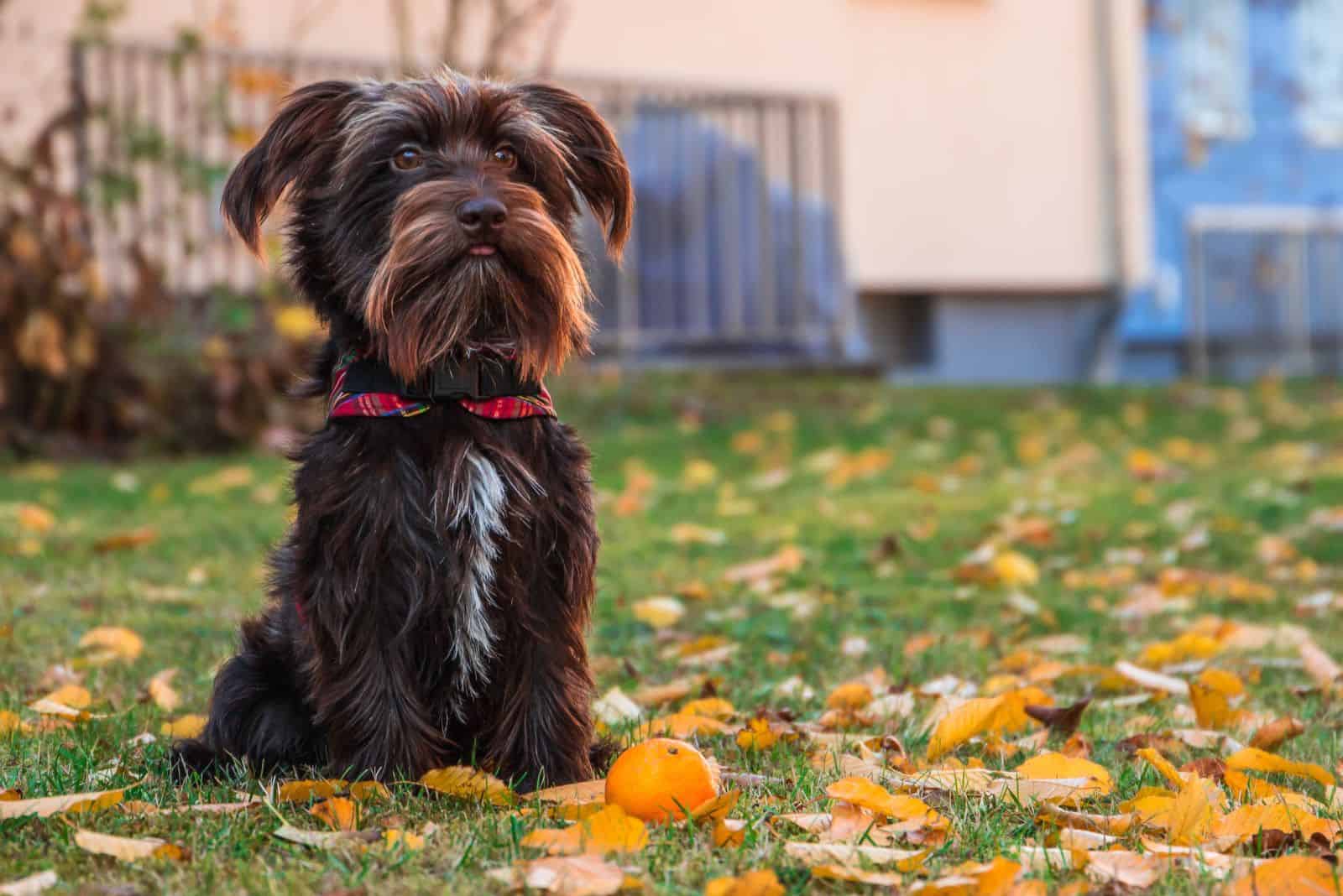
How will you know that the Schnauzer Dachshund mix is the right dog for you? Well, if the previously mentioned health concerns did not dissuade you from getting one, this short history about the Schnauzer and Dachshund will cement the decision.
The Original (Ex)Terminator, He’ll Be Back
Farmers in Germany had problems with rats. There were no extermination services back in the fifteenth century, so a natural remedy to rodent infestations was a dog of pure continental Europe pedigree.
You might be wondering why that is important, so let me explain. The Schnauzer belongs to the terrier working group of dogs. Most terrier breeds are a British export, but the Schnauzer is the ultimate German terrier with Poodle, Affenpinscher, and standard Schnauzer blood.
With a pinch of Affenpinscher in the mix and a dash of miniature Poodle, the mini Schnauzer came to life. The standard-sized Schnauzer was too big to dig into rat nests, so the size reduction brought it an illustrious career as an exterminator.
Nowadays, they exterminate sadness, just like Chihuahuas, but with a less fiery attitude.
Your Honor, This Weiner Dog Is Badger(ing) The Witness
Similar to the Schnauzer, the Dachshund is a dog originally bred for chasing down badgers, infiltrating their dens, and evicting them. You would never suspect the sausage-looking dog to be that intimidating for a rather aggressive animal such as the badger.
If you think badgers were over-the-top for Dachshunds, then your jaw will drop at the realization that packs of weiner dogs hunted wild boars. Yes, the two-hundred-pound wild boars with large tusks that would send a large dog flying if it crossed their path.
In peaceful times like the twenty-first century, these dogs with elongated bodies are primarily companion dogs that hunt your local squirrels or try to stay in shape by scavenging pennies from the backyard.
Family Photo Album
There is a mini Dachshund, in case you wondered. Their height is five to six inches and they can weigh up to eleven pounds, while the standard is slightly taller at eight to nine inches and ranges from sixteen to thirty-two pounds.
A mini Schnauzer is twelve to fourteen inches tall and eleven to twenty pounds heavy. This means that the Schnoxie prefers having a bit more muscle with shorter legs, and I will not complain.
The Dachshund is famous for its legs, which are quite short compared to its elongated body. The long muzzle narrows towards the nose, and the stop is very smooth. The Schnauzer has a shorter muzzle and a more pronounced stop that fits the top-flat skull.
Both dogs have strong front legs used for digging and moving in underground tunnels, with well-developed feet to facilitate removing soil. The Dachshund’s tail is long and pointy at the end, while the Schnauzer has a medium-length tail that is usually cropped very short.
Dachs and Schnauzers have naturally floppy ears, with the Schnauzer having the possibility of ears that are halfway erect and triangular. Dachshunds have iconic, slightly rounded ears that hang fully.
Schnauzer’s standard requires ear cropping. Of course, if you wish to participate in conformation events, cropping and docking are mandatory, but you can leave it all-natural, too.
Coat Quality And Color
Schnauzers are known for their rough coat, designed for their weatherproof features, but there is a Dachshund version that sports one of those too. Still, the Schnauzer comes only in the medium, wiry, double-coat version, while the Dachshund has a smooth, short, or medium coat option too.
The smooth coat is more common in the Dachshund because it was bred for a longer period of time, but the wire-haired Dachshund is becoming increasingly popular (easier movement in tunnels).
For Dachshunds, you have more than a dozen colors to choose from. Not all are according to AKC standards, but you will have a great time choosing anyways. Half a dozen of markings make for great individuality in each dog, and you need not worry about your Schnauz being cookie-cutter.
The Schnauzer has three color options, with no markings officially recognized by the AKC. That makes its coat a lot more uniform with fewer “stylistic” choices.
Dachshunds are low to moderate shedders, with Schnauzers requiring significantly more grooming. This is why the Schnauzer Dachshund mix is good for those who prefer moderate shedding at worst.
Schnauzers have a special technique of grooming called hand stripping the coat. This means that just grabbing a brush and grooming is not an option if you want your dog to have the best possible coat health.
The Relaxed Terrier And Laid-Back Hound
The common terrier breeds’ reputation precedes them. Yorkies, Boston Terriers, Staffordshire Terriers, and other British-modified terrier breeds all have stubbornness and a knack for strong-headedness as defining traits.
Schnauzers have a much more relaxed temperament, which means they are much less barky and disobedient. They still do bark when doing anything remotely similar to terrier duty, but not as frequently as a Yorkie would, for example.
Dachshunds are hound dogs, so tracking is in their blood. They require less physical activity than most hound-type breeds and can be great couch-potato companions for you and your family. They are less inclined towards training than the Schnauzer but still very intelligent.
Both dogs are naturally playful, which means you will have fun with them, but the Schnauzer expresses its playfulness with higher energy than the Dachshund. The latter is more friendly towards strangers and children, but both make for amazing family dogs.
Either dog breed will have a moderately expressed protective nature, but do not expect German shepherd levels of guard dog potential. The Schnauzer has a slightly better watchdog instinct, so keep that in mind.
If you have other pets around, the Dachshund will have an easier time successfully co-living with them at an adult age, but both dogs will do great if introduced to other animals during puppyhood.
These two purebred dogs are unbelievably adaptable to any living condition, but both will thrive in houses with larger yards or open spaces. Long daily walks will do good in city areas but do not forget mental stimulation is essential too.
Wrapping Up
Designer breeds can be so much more than visual candy. They can provide the best of both worlds, and the Schnauzer Dachshund mix does exactly that. Being moderate shedders, moderate-high energy dogs with a relatively good health bill makes the Schnoxie appeal to any audience.
Even though there are many established features in this crossbreed, you will always have a surprise in your Schnoxie puppy. The coat might be closer to the Dachs, but the ears to the Schnauzer or vice versa, but I consider all of these “happy little accidents”, as Bob Ross would say.
Health is always a primary concern for designer breeds, so make sure you see confirmation that the puppy’s parents do not have genetic diseases or are predisposed to them. A breeder who does not present all possible health and bloodline certificates should be avoided.
I will leave you with that in mind, hoping you find the Schnoxie of your life.
